I am currently working on a slate text editor where the user can add images and text. I would also like to have a hovering toolbar which serves different buttons depending on what type of element the user has selected.
For example if the user has selected an image then I would like to serve one set of buttons. If the user has selected a paragraph I would like to serve another set of buttons.
After looking through the examples found here:
https://www.slatejs.org/examples/richtext
I have pieced together a rough example of my desired text editor without the context dependant hovering toolbar buttons:
https://codesandbox.io/s/suspicious-pine-lrxgw
But I am struggling to work out how to detect what type of element is selected within the editor? I don't know if there is a way to do this using slate-react? Or even in vanilla JS?
Ideally I would also be able to get other information about the element as well. For example the images height and width as this would help with styling.
Any help appreciated

